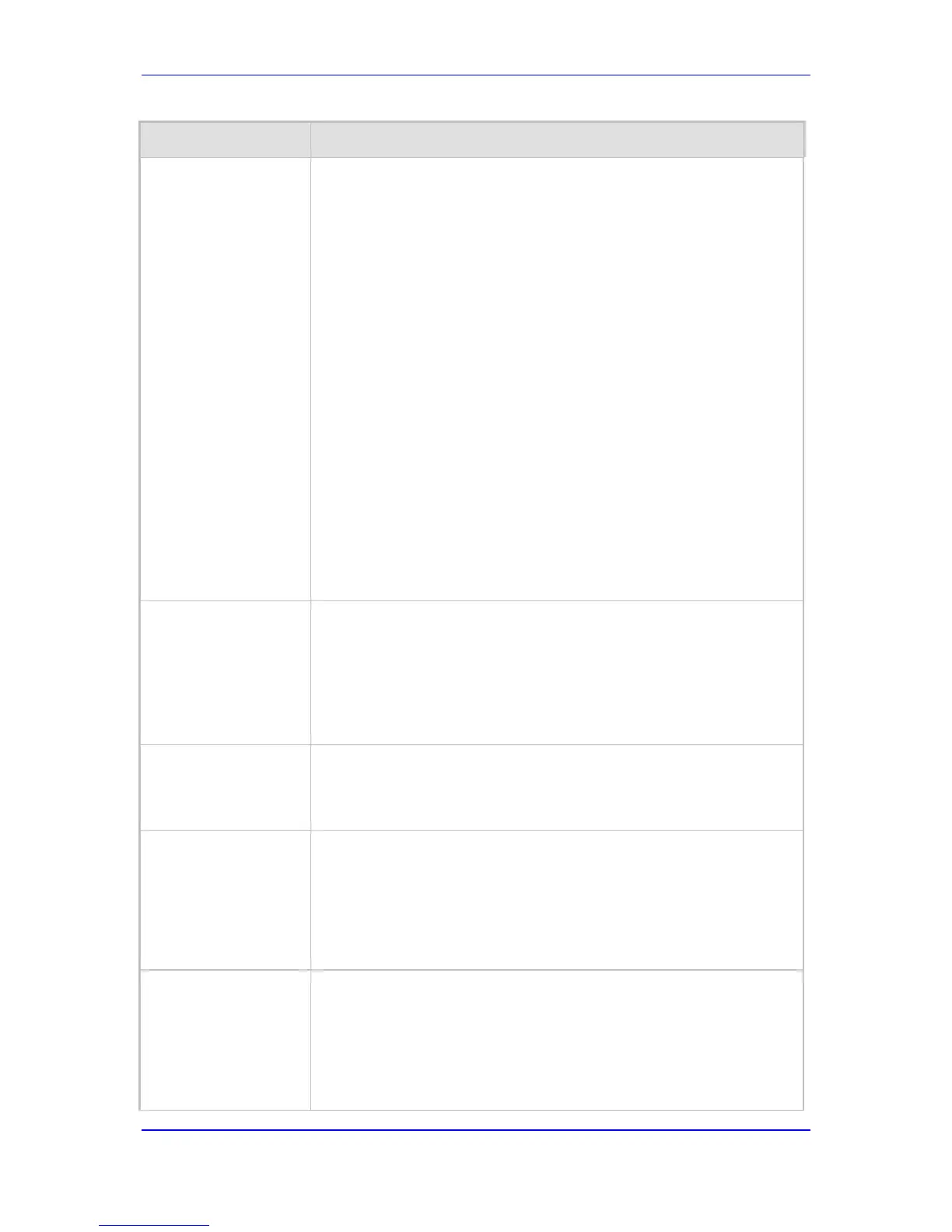[2] Double Wink = Double-wink signaling. The FXS interface
generates the first wink upon detection of an off-hook state in the line.
The second wink is generated after a user-defined interval (configured
by the TimeBetweenDIDWinks parameter), after which the DTMF/MF
digits are collected by the device. Digits that arrive between the first
and second wink are ignored as they contain the same number.
Example: (Wink) KP 911 ST (Wink) KP I(I) xxx-xxxx ST (Off Hook)
[3] Wink & Polarity= The FXS interface generates the first wink after it
detects an off-hook state. A polarity change from normal to reversed is
generated after a user-defined time (configured by the
TimeBetweenDIDWinks parameter). DTMF/MF digits are collected
only after this polarity change. Digits that arrive between the first wink
and the polarity change are ignored as they always contain the same
number. In this mode, the FXS interface does not generate a polarity
change to normal if the Tel-to-IP call is answered by an IP party.
Polarity reverts to normal when the call is released.
Example: (Wink) KP 911 ST (Polarity) KP I(I) xxx-xxxx ST (Off Hook)
Notes:
Options [2] and [3] are applicable only to FXS interfaces.
The EnableReversalPolarity and PolarityReversalType parameters
must be set to [1] for FXS interfaces.
See also the Enable911PSAP parameter.
This parameter can also be configured in a Tel Profile.
[TimeBetweenDIDWin
ks]
Defines the interval (in msec) for wink signaling:
Double-wink signaling [2]: interval between the first and second wink.
Wink and Polarity signaling [3]: interval between wink and polarity
change.
The valid range is 100 to 2000. The default is 1000.
Note: See the EnableDIDWink parameter for configuring the wink
signaling type.
Web/EMS: Delay
Before DID Wink
CLI: delay-b4-did-wink
[DelayBeforeDIDWink]
Defines the time interval (in msec) between the detection of the off-hook
and the generation of the DID Wink.
The valid range is 0 to 1,000. The default is 0.
Note: This parameter is applicable only to FXS interfaces.
EMS: NTT DID
Signalling Form
CLI: NTT-DID-signaling-
form
[NTTDIDSignallingFor
m]
Determines the type of DID signaling support for NTT (Japan) modem:
DTMF- or Frequency Shift Keying (FSK)-based signaling. The devices
can be connected to Japan's NTT PBX using 'Modem' DID lines. These
DID lines are used to deliver a called number to the PBX.
[0] = (Default) FSK-based signaling
[1] = DTMF-based signaling
Note: This parameter is applicable only to FXS interfaces.
EMS: Enable DID
[EnableDID]
This table parameter enables support for Japan NTT 'Modem' DID. FXS
interfaces can be connected to Japan's NTT PBX using 'Modem' DID
lines. These DID lines are used to deliver a called number to the PBX.
The DID signal can be sent alone or combined with an NTT Caller ID
signal.
The format of this parameter is as follows:
[EnableDID]

